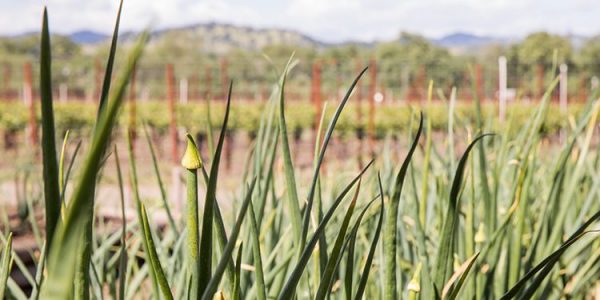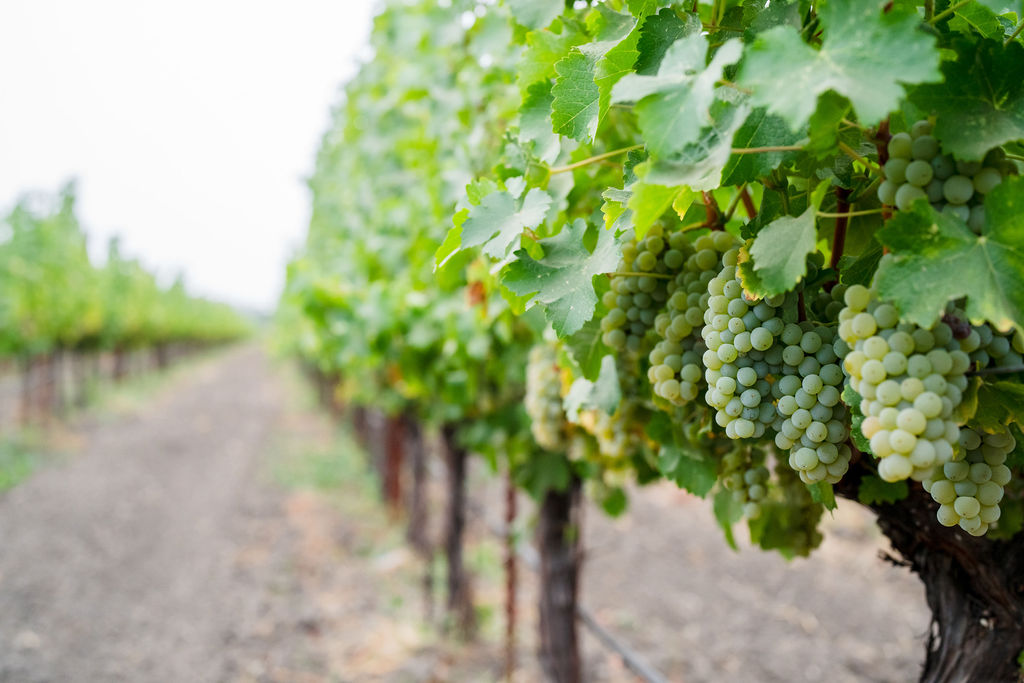
Wine Pairings Fresh from the Spring Garden
When winter’s grey skies and chilling temperatures finally give way to the exuberant leafiness of spring, we instinctively yearn for the bright, herbaceous flavors of the garden. This is true not only on our dinner plates, but in our wine glasses.
There’s no better time to find culinary inspiration than spring, when asparagus stalks poke their tips up through the soil and string bean vines wind their delicate tendrils around garden stakes. Wine and spring produce have a wonderful way of bringing out the best in each other, adding another dimension to the seasonal table.
No one knows this better than Britny Sundin Maureze, estate chef at St. Supéry Estate Vineyards and Winery. Each spring, she looks to the bounty of the winery’s organic gardens to create dishes that pair perfectly with St. Supéry’s Napa Valley estate wines.
“When we think about the way we describe wine, it’s often related to food in some way,” she says. “Herbs, fruit, vegetables—they are all linked to wine in the culinary world. If someone tastes or smells licorice in a wine, that can be translated into tarragon or fennel when speaking the garden language. Utilizing a garden ingredient that approximates the natural flavor or aroma in the wine enhances the experience by bringing that aspect to the forefront.”
When creating new seasonal dishes and recipes to pair with St. Supéry’s wines, Maureze heads for the estate’s culinary garden. “I’m constantly asking Kay, our horticulturist, what’s ready for harvest, then I build menus from there,” she says. “The garden produce serves as the foundation, then I craft a dish based on what wine that particular ingredient best complements.”
Even vegetables considered difficult to pair with wine, such as asparagus, can find their perfect match. “Asparagus can actually pair very nicely with certain wines, especially when it’s young, fresh and in season,” Maureze says. “My favorite wine to pair with it is sauvignon blanc, because it typically has enough fruit and acidity to balance out the vegetal qualities of the produce.”
Maureze likes to prepare asparagus simply, blanching it to allow it to keep its sweetness and textural snap. She drizzles it with extra virgin olive oil, adds a bit of salt and lemon zest, then tops the dish with crumbled feta and an herby citrus vinaigrette. “It’s just the right combination to meld perfectly with refreshing sauvignon blanc,” she says.
Spring carrots call for a slightly richer wine. “I think about the natural sweetness and earthiness of carrots and imagine them with chardonnay,” she says. “From there, I bring in apples, onions, ginger, curry, coconut milk and some fresh citrus, and create a roasted carrot and apple soup.”
The silkiness of the puréed soup mirrors the luscious texture of the chardonnay, she says, while the sweet carrot, tart apple and warm curry spices touch on the wine’s fruit and barrel components.
Preparation also plays an important role. “Gentle cooking methods like poaching, steaming, blanching and sautéing are best utilized with softer wines that require restraint in food,” Maureze says. “More aggressive methods like searing and grilling are best with heavier, more robust styles of wine.”
For lighter-style wines, she recommends keeping seasonings simple. “A dusting of salt and pepper is often all you need for delicate wines,” she says, “while complex spice rubs can be used with bolder wines.”
The same philosophy applies to sauces. Vinaigrettes and herb pistous bring out the best in lighter wines, such as crisp Sauvignon Blanc. Demi-glace, wine reductions, and cream-based sauces are better suited to more intense wines.
While sauvignon blanc is often her go-to choice this time of year, Maureze points out that red wines can also work well with spring vegetable dishes.
“I love pairing turnips with red wines,” she says. “When turnips are younger, they have a pleasing sweetness and earthiness that is a great complement to the earthy undertones in our Rutherford wines.”
Maureze pan-roasts turnips with butter and fresh thyme, or braises them in milk and cream, then purées the mixture with roasted garlic for a twist on mashed potatoes.
Spring onions are another unexpected pairing for red wines—especially cabernet sauvignon. Maureze starts by browning them in butter, then braising the onions in red wine and balsamic vinegar. “The result is a rich, sweet, melt-in-your-mouth bite that gives you that unctuous satisfaction without even needing a bite of steak,” she says.
Whichever vegetables you’re working with, she notes, subtlety is the key to finding perfect pairings. “Highlighting nuance is essential,” she says. “It’s all about finding the right balance.”
Want to learn more about pairing wine with garden vegetables? St. Supéry offers visitors a daily seated tasting, Veggies + Vino, that pairs four different estate wines with vegetarian small bites featuring produce from the winery’s culinary garden and Dollarhide Estate Ranch.
You can also explore pairings at home using these garden-inspired spring recipes created by St. Supéry’s culinary team.








